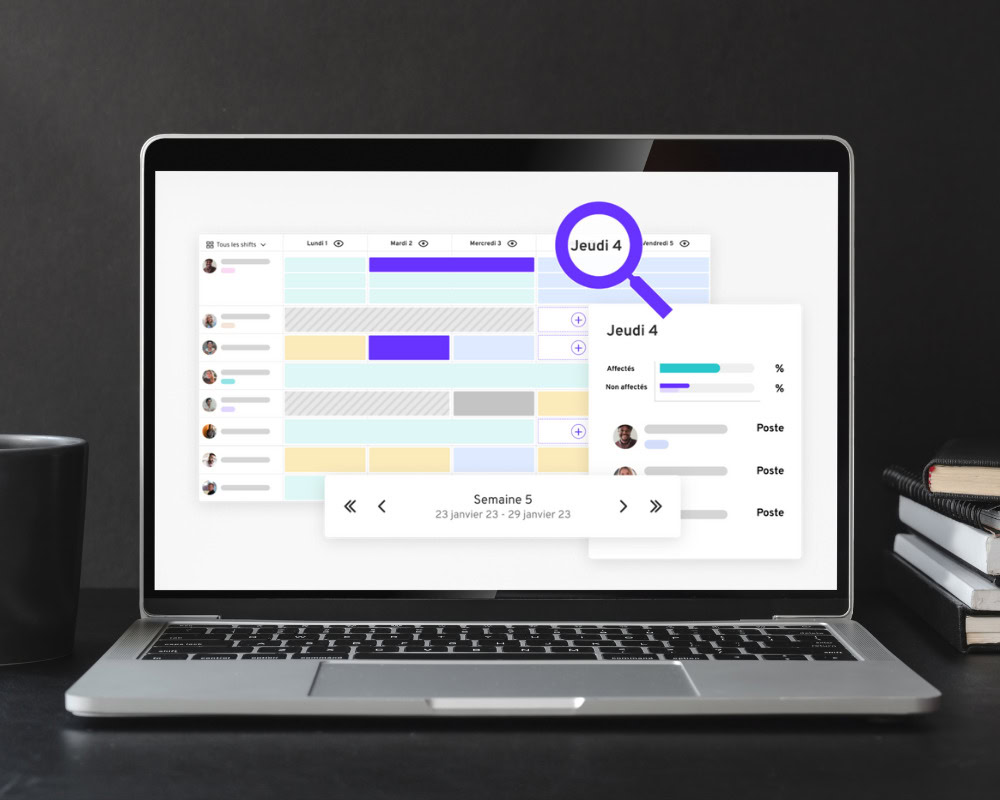Introduction
The power of forecasting: The importance of Strategic Workforce Planning
Welcome to a world where anticipation is the key to competitiveness. In the complex world of industry, the Strategic Workforce Planning (SWP) plays a central role, orchestrating the availability of essential skills to ensure your company's growth and resilience. It's the art of visit, align and optimize human resources with long-term strategic objectives. It's not just planning for the future; it's actively shaping the future by building a workforce ready to meet tomorrow's challenges. Think of him as an orchestra conductor, ensuring that every part of your company is synchronized, efficient and ready to play its part in the symphony of the industrial marketplace.
Understanding Strategic Workforce Planning
Definition and challenges for your company
Visit Strategic Workforce Planning is a proactive approach to aligning your workforce structure with future business needs. It's not just a matter of filling in positions but to understand and anticipate skills needsof anticipating change demographic, technological and economic trends, and prepare your organization to be agile and adaptable. The stakes are high: staying competitive, innovating, and maintaining top-level performance while managing costs and maximizing the potential of every employee. Visit Strategic Workforce Planning enables you to make strategic choices about how to train, recruit, develop and retain the talent needed to achieve your company's vision and objectives.
The concrete benefits of effective planning
Effective strategic workforce planning is far from a theoretical exercise; its benefits are tangible and manifold. It leads to a better allocation of resources, reduces recruitment costs at anticipating needsand improves talent retention by offering clear, motivating career paths. It also enables us to better withstand market disruptions by having a flexible, skilled workforce ready to adapt and innovate.
Finally, it strengthens employee commitment by involving them in the company's long-term vision and showing them how their work contributes directly to collective success. In short, the Strategic Workforce Planning is not just an HR strategy; it's a vital business strategy, an investment in the future and an essential growth driver.
Mistakes to avoid for a competitive future
Mistake 1: Strategic stagnation
Repeating the same strategies year after year is a sure recipe for stagnation. Markets evolve, new technologies emerge, and your company must adapt. How can you stay dynamic in your planning? Support innovationKeep abreast of industry trends, and don't hesitate to question and revise your strategic plans on a regular basis. Agility must be at the heart of your strategy, enabling you to continually adapt to new market realities.
Mistake 2: Underestimating customer needs
Customer needs and expectations drive business. Aligning strategy and customer expectations means keeping abreast of their evolution and integrating this understanding into every aspect of your planning. Use customer data to anticipate demands and personalize your approach. A customer-centric company is one that remains relevant and competitive.
Mistake 3: Ignoring competitive intelligence
Competition defines the playing field and cannot be ignored. The importance of an in-depth competitive analysis lies in the ability to anticipate competitors' moves and adapt quickly. Know your competitors as well as you know yourself, and use this information to refine your strategy and stay ahead.
Mistake 4: Creating a plan without realistic anchors
An ambitious plan is useless if it can't be achieved. The need for a coherent, realistic plan lies in the balance between aspiration and feasibility. Make sure your strategic planning is based on a thorough analysis of available resources, your team's skills and market conditions.
Mistake 5: Neglecting internal consensus
A strategic plan cannot succeed without the support of the entire organization. The importance of commitment and communication is crucial to getting buy-in from all levels. Involve stakeholders from the outset, and make sure every voice is heard. A strong internal consensus leads to more efficient execution and better overall performance.
Strategies for successful Strategic Workforce Planning
Asking the right questions for a future vision
Strategic planning starts with the right questions. The key to successful forward planning lies in your ability to see the future in a positive light. holistic. What are your long-term objectives? How will market trends and technological innovations affect your industry? What talent will be needed? Thorough, forward-looking thinking is the foundation of an effective SWP.
Master your existing and future skills
Understanding and developing human capital is essential. The importance of skills mapping is not to be underestimated. This means having a clear understanding of your workforce's current skills and those needed for the future. This knowledge enables strategic decisions on training, development and recruitment.
Align internal skills with market requirements
The market is changing fast, and your workforce needs to keep up. Anticipating and preparing the skills of tomorrow is vital if we are to remain competitive. This means not only keeping up with market trends, but also developing a culture of continuous learning within the company, where adaptability and innovation are encouraged.
Optimizing HR processes for greater efficiency
HR plays a pivotal role in implementing Strategic Workforce Planning. From recruitment to training: integrating agility into your HR processes means adopting innovative technologies, dynamic staff development strategies and targeted recruitment methods to build a workforce that not only meets today's needs, but is also ready for future challenges.
Going further with Strategic Workforce Planning
Integrate SWP into your overall planning
An effective strategy doesn't work in isolation. The importance of a holistic approach lies in integrating your workforce planning with your overall corporate strategy. This means aligning growth objectives, product development initiatives and technology investments with your workforce planning. By integrating Strategic Workforce Planning in every aspect of business planning, you ensure consistency that amplifies your organization's efficiency and responsiveness to market changes.
Diversity and inclusion: key success factors
Diversity is not just a moral objective, it's a business strategy. Strengthening competitiveness through a diversified workforce generates innovation, improves decision-making and broadens your talent base. Diversity of perspectives, experience and skills promotes more creative problem-solving and a better understanding of customers. Actively integrating diversity and inclusion policies into your SWP not only strengthens your corporate culture but also boosts your competitiveness in the global marketplace.
Using technology for advanced Strategic Workforce Planning
The digital age is transforming SWP. How are AI and predictive analytics transforming SWP? By automating processes, providing advanced data analysis and predicting market trends and skills requirements. Intelligent tools can help identify skills gaps, forecast changes in talent demand and suggest training and development strategies. By integrating these technologies, companies can make their workforce planning more dynamic, accurate and proactive.
Conclusion
Adaptability and foresight: the keys to success in a constantly changing world
In today's fast-paced business environment, adaptability and foresight are essential. Visit SWP is not a one-off exercise, but a continuous process requiring re-evaluation and adjustment. Successful companies are those that anticipate the future, adapt quickly to new realities and prepare for unknown challenges. By adopting a strategic planning With a flexible, forward-looking workforce, you're positioned to thrive, whatever the market conditions.



